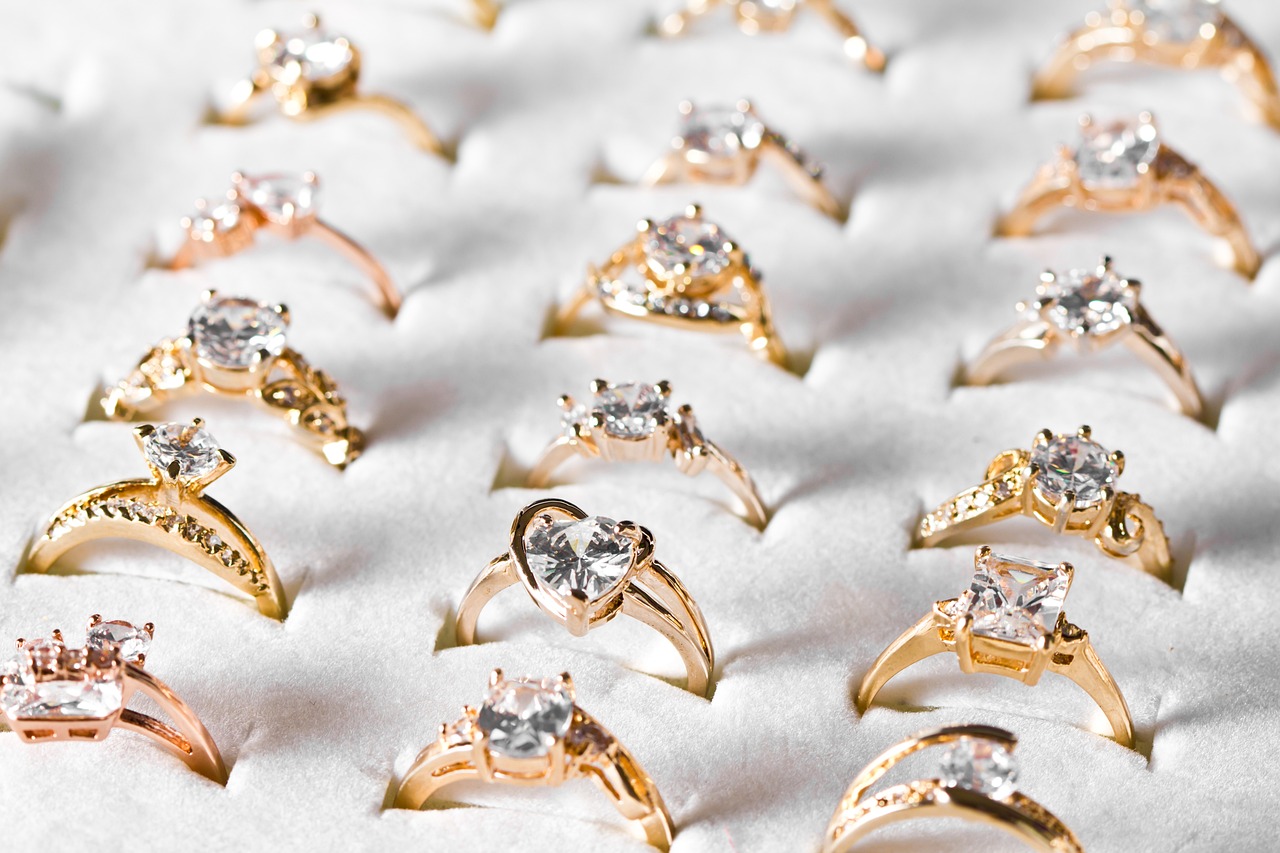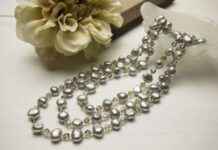This article delves into the significance of various metals used in jewelry, exploring their cultural meanings, unique properties, and the emotions they evoke in those who wear them. Understanding these materials can enhance personal expression and connect us to tradition.
Gold: The Symbol of Wealth and Purity
Gold has long been revered as a symbol of wealth, prosperity, and purity. Its distinctive properties, including malleability and resistance to tarnish, make it a favored choice for various forms of jewelry. Beyond its aesthetic appeal, gold carries deep emotional value, often representing significant life events such as weddings and milestones.
Silver: The Metal of the Moon
Silver is commonly associated with the moon and femininity, embodying intuition, emotions, and the subconscious. Its versatility allows for a wide range of designs, making it a beloved metal in jewelry. Many cultures also regard silver as a protective element, enhancing its allure.
- The Healing Properties of Silver: Many believe that silver promotes balance and harmony, influencing both physical and emotional well-being.
- Silver in Different Cultures: Across various traditions, silver is linked to purity and protection, playing a significant role in rituals worldwide.
- Modern Uses of Silver in Jewelry: Its affordability and beauty make silver a popular choice in contemporary designs.
- Choosing Silver for Personal Expression: Silver jewelry offers a unique way to express individuality and style.
Platinum: The Ultimate Symbol of Love
Platinum is often viewed as the ultimate symbol of love and commitment, particularly in engagement and wedding rings. Its rarity and durability enhance its desirability.
- Platinum vs. White Gold: Understanding the differences between these two metals can aid in making informed jewelry choices.
- The Care and Maintenance of Platinum Jewelry: Proper care is essential for maintaining platinum’s beauty, and this section provides practical tips for effective cleaning and storage.
Rose Gold: The Trendy Choice
Rose gold has surged in popularity due to its romantic hue and modern appeal. This metal resonates with contemporary jewelry lovers, enhancing various styles and skin tones.
- The Allure of Rose Gold in Fashion: Its unique color makes rose gold a favorite in fashion jewelry.
- Symbolism of Rose Gold: Beyond aesthetics, rose gold symbolizes love and warmth, fostering emotional connections.
Brass and Copper: The Artisan’s Choice
Brass and copper are often favored by artisans for their unique colors and malleability. These metals hold significant cultural meanings and are used in handmade jewelry.
- The Environmental Impact of Brass and Copper: While beautiful, the production of these metals can have environmental consequences.
- Brass and Copper in Cultural Jewelry: These metals have rich histories across cultures, often symbolizing tradition and craftsmanship.
Conclusion: Choosing the Right Metal for You
Selecting the right metal for jewelry extends beyond aesthetics; it involves understanding the meanings and properties each metal holds. Consideration of personal significance can greatly enhance the jewelry selection process.
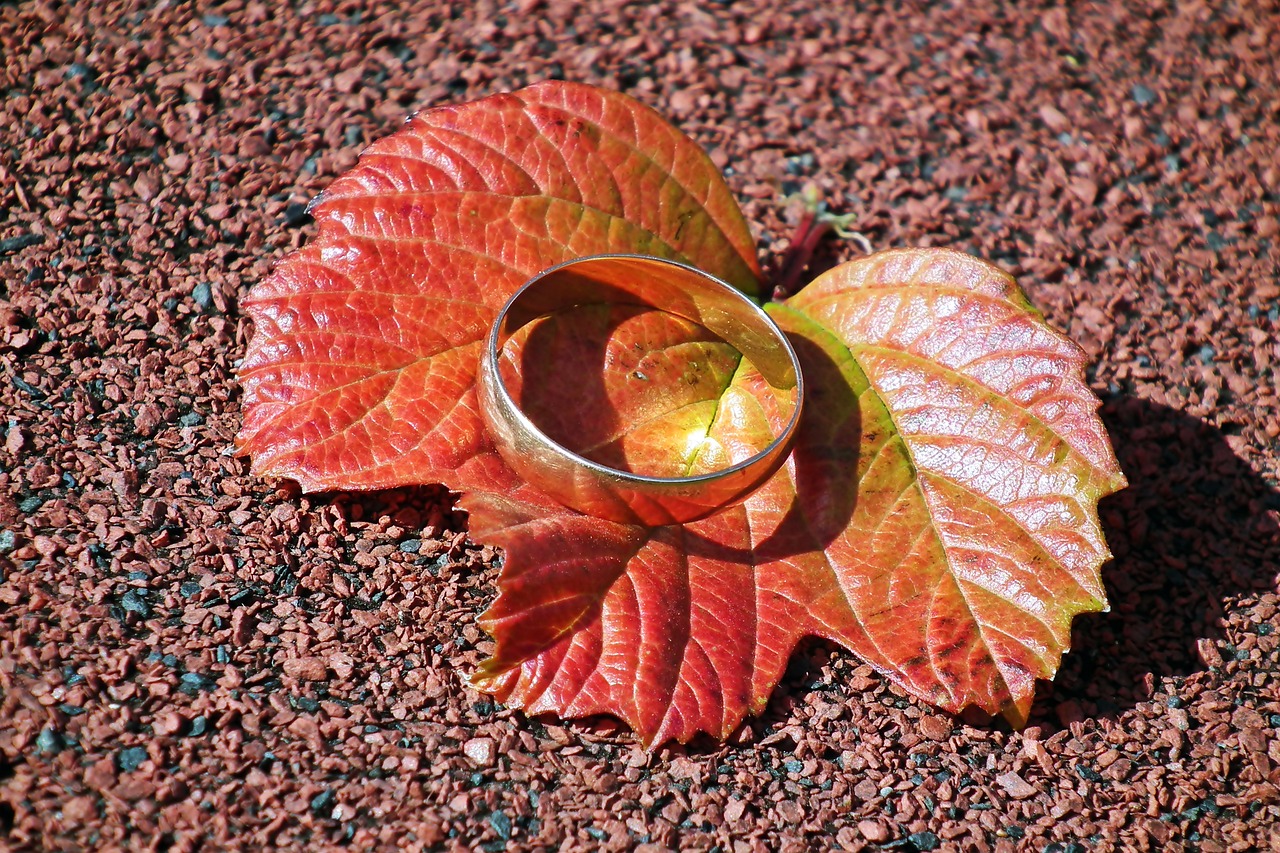
Gold: The Symbol of Wealth and Purity
Gold has been revered throughout history, transcending cultures and civilizations as a universal symbol of wealth, prosperity, and purity. This precious metal possesses unique properties that not only make it visually stunning but also highly durable, making it a favored choice for various types of jewelry.
From ancient Egyptian pharaohs adorning themselves with gold to modern-day engagements marked by golden rings, the allure of gold is undeniable. Its luster and radiance evoke feelings of luxury and status, making it a popular choice for those looking to make a statement. In addition to its aesthetic appeal, gold also carries significant emotional value. It is often associated with milestones and celebrations, such as weddings, anniversaries, and other special occasions.
Gold’s intrinsic qualities, such as its non-reactive nature and resistance to tarnish, contribute to its longevity as a cherished material. Unlike other metals, gold does not corrode or rust, ensuring that jewelry made from it can be passed down through generations as a family heirloom. This durability reinforces its association with timelessness and lasting value.
Moreover, the cultural significance of gold varies around the world. In many cultures, it is seen as a symbol of divine favor and is often used in religious artifacts and ceremonial items. The golden color is also linked to the sun, representing life and vitality. As a result, gold jewelry is frequently worn not just for adornment but as a means of expressing one’s identity and heritage.
In conclusion, gold is much more than just a metal; it embodies a rich tapestry of history, emotion, and cultural significance. Whether worn as a statement piece or cherished as a family treasure, gold continues to captivate hearts and minds, solidifying its place as a symbol of wealth and purity across the globe.
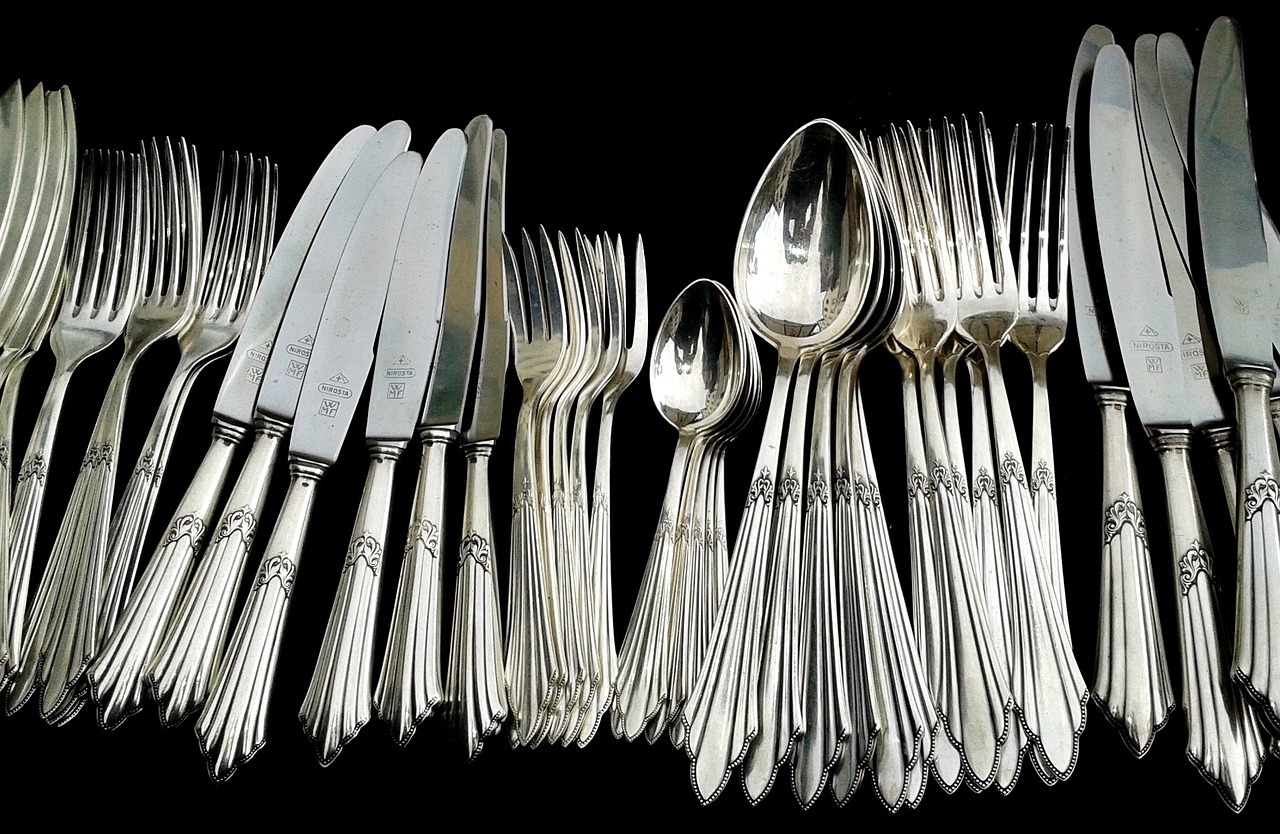
Silver: The Metal of the Moon
Silver is often revered as the Metal of the Moon, embodying qualities that resonate with the feminine and the intuitive. This precious metal not only captivates with its lustrous appearance but also carries a rich tapestry of meanings and associations that enhance its allure in jewelry.
The connection between silver and the moon is deeply rooted in various cultures. The moon, symbolizing intuition and emotions, is often linked to the cycles of life, reflecting the ebb and flow of feelings. Silver, with its shimmering qualities, mirrors the moonlight, evoking a sense of calm and tranquility. This relationship makes silver a popular choice for those seeking to express their inner selves through jewelry.
Moreover, silver’s versatility in design allows it to be molded into a variety of styles, from delicate chains to bold statement pieces. This adaptability makes silver a favored material among jewelers and consumers alike, as it can complement any outfit or occasion. Whether it is used in elegant earrings, intricate bracelets, or timeless necklaces, silver jewelry can enhance one’s personal style.
Healing properties are often attributed to silver, with many believing that it promotes balance and harmony within the wearer. This belief has led to the use of silver in various healing practices, where it is thought to aid in emotional stability and physical well-being. The soothing energy associated with silver can provide a sense of peace, making it a cherished metal in both personal adornment and holistic healing.
Across different cultures, silver is also seen as a symbol of protection and purity. Many traditions incorporate silver into rituals and ceremonies, highlighting its significance in safeguarding against negativity and promoting positive energies. This cultural richness adds depth to the meaning of silver, making it a profound choice for those who value heritage and symbolism in their jewelry.
In contemporary settings, silver remains a popular choice due to its affordability and beauty. With the rise of modern jewelry trends, silver has found its place in fashion, appealing to a wide range of tastes and preferences. From minimalist designs to ornate creations, silver jewelry continues to evolve, reflecting current styles while maintaining its timeless charm.
In conclusion, silver is more than just a metal; it is a representation of the moon’s mystical qualities and an embodiment of feminine energy. Its versatility, healing properties, and cultural significance make it a beloved choice for many, inviting individuals to express their unique identities and emotions through beautiful jewelry.
The Healing Properties of Silver
Throughout history, silver has been revered not just for its aesthetic appeal but also for its purported healing properties. Many cultures believe that silver can promote balance and harmony in both physical and emotional realms. This section delves into the various ways silver is thought to influence well-being.
- Physical Healing: Some proponents claim that silver can aid in the healing of wounds and infections. Its natural antibacterial properties are often cited as a reason for its effectiveness in promoting skin health.
- Emotional Balance: Silver is associated with the moon, which symbolizes intuition and emotions. Wearing silver jewelry is believed to enhance emotional stability, helping individuals navigate through life’s ups and downs.
- Spiritual Connection: In many spiritual practices, silver is considered a conduit for energy. It is thought to help in meditation and enhance one’s connection to the spiritual realm.
Moreover, silver is often used in alternative healing practices. For instance, some healing crystals are combined with silver to amplify their effects. This synergy is believed to create a powerful tool for those seeking to improve their well-being.
In addition to its physical properties, silver is also thought to have a calming effect on the mind. Many people report feeling more centered and peaceful when wearing silver, which may be attributed to its reflective nature and association with the moon’s soothing energy.
In conclusion, while scientific evidence may be limited, the belief in the healing properties of silver persists across cultures. Whether worn as jewelry or used in healing practices, silver continues to be a symbol of wellness and tranquility for many.
Silver in Different Cultures
Silver has long been revered across various cultures, often embodying meanings that extend beyond mere aesthetics. This precious metal is frequently associated with protection, purity, and even spirituality. Its significance can be traced back to ancient civilizations, where it played a vital role in rituals and traditions.
In many cultures, silver is seen as a guardian metal. For instance, in Indian culture, silver is believed to ward off negative energies and is commonly used in religious ceremonies. Silver jewelry is often worn during auspicious events, symbolizing a protective charm for the wearer.
Similarly, in Native American traditions, silver holds a sacred place. It is often used in craftsmanship, particularly in the creation of intricate jewelry that tells stories of heritage and identity. The metal is thought to connect the physical and spiritual realms, making it a vital component in various rituals.
In Chinese culture, silver is associated with the moon and is considered a symbol of feminine energy. It is believed to enhance intuition and emotional balance, making it a popular choice for jewelry among women. The Chinese often gift silver items during significant life events, such as weddings or births, as tokens of good fortune.
The versatility of silver also allows it to adapt to modern interpretations. In contemporary jewelry, silver is often used not only for its beauty but also for its perceived healing properties. Many wear silver to promote emotional and physical well-being, adding a layer of personal significance to the adornment.
In conclusion, silver’s role across various cultures is multifaceted, embodying elements of protection, spirituality, and personal expression. Whether through traditional rituals or modern fashion, silver continues to hold a cherished place in the hearts of many.
Modern Uses of Silver in Jewelry
Silver has emerged as a popular choice in contemporary jewelry, celebrated for its affordability and stunning aesthetics. This versatile metal not only enhances the beauty of various designs but also resonates with a wide audience due to its unique properties.
In the realm of modern jewelry, silver is often crafted into an array of styles, appealing to diverse tastes. From minimalist designs to intricate patterns, silver jewelry can be found in various forms, including:
- Rings: Silver rings, whether simple bands or adorned with gemstones, are popular for both casual and formal occasions.
- Necklaces: Silver necklaces can range from delicate chains to bold statement pieces, making them a staple in many jewelry collections.
- Earrings: From studs to dangling designs, silver earrings are versatile accessories that complement any outfit.
- Bracelets: Silver bracelets, often combined with beads or charms, allow for personal expression and style.
Current trends in silver jewelry often emphasize sustainability and ethical sourcing. Many designers are committed to using recycled silver, which not only reduces environmental impact but also appeals to eco-conscious consumers. This shift towards sustainable practices has made silver a favored material among those who value both style and responsibility.
Furthermore, silver’s reflective qualities and ability to complement various gemstones enhance its appeal. Designers frequently pair silver with colored stones, creating stunning contrasts that catch the eye and add depth to the pieces.
In conclusion, silver continues to hold a significant place in modern jewelry, characterized by its affordability, beauty, and versatility. Whether for everyday wear or special occasions, silver jewelry remains a timeless choice that reflects personal style and values.
Choosing Silver for Personal Expression
Silver jewelry serves as a remarkable medium for individuals to showcase their unique personality and style. Unlike other metals, silver possesses a distinctive charm that resonates with many, making it a popular choice for various designs. The versatility of silver allows for a wide range of styles, from intricate, ornate pieces to sleek, modern designs. This adaptability ensures that there is something for everyone, regardless of their personal taste.
One of the most compelling aspects of silver jewelry is how it can reflect personal identity. For instance, a handcrafted silver pendant might symbolize a significant life event or personal belief, while a minimalist silver ring could convey a sense of modernity and simplicity. Each piece tells a story, allowing the wearer to express their individuality through their choice of jewelry.
Moreover, silver’s affordability compared to other precious metals like gold or platinum makes it accessible to a broader audience. This accessibility encourages experimentation with different styles and designs, enabling people to curate collections that truly represent their personal journey and aesthetic preferences. Whether it’s a statement piece or delicate everyday wear, silver jewelry can be tailored to match any outfit or occasion.
Additionally, the cultural significance of silver adds another layer to its appeal. In many cultures, silver is associated with protection and purity, making it a meaningful choice for jewelry that holds sentimental value. This cultural depth allows wearers to connect with their heritage while also expressing their modern style.
In conclusion, silver jewelry is more than just an accessory; it is a powerful form of personal expression. By choosing silver pieces that resonate with their identity, individuals can showcase their unique style while embracing the cultural and emotional significance that silver carries.
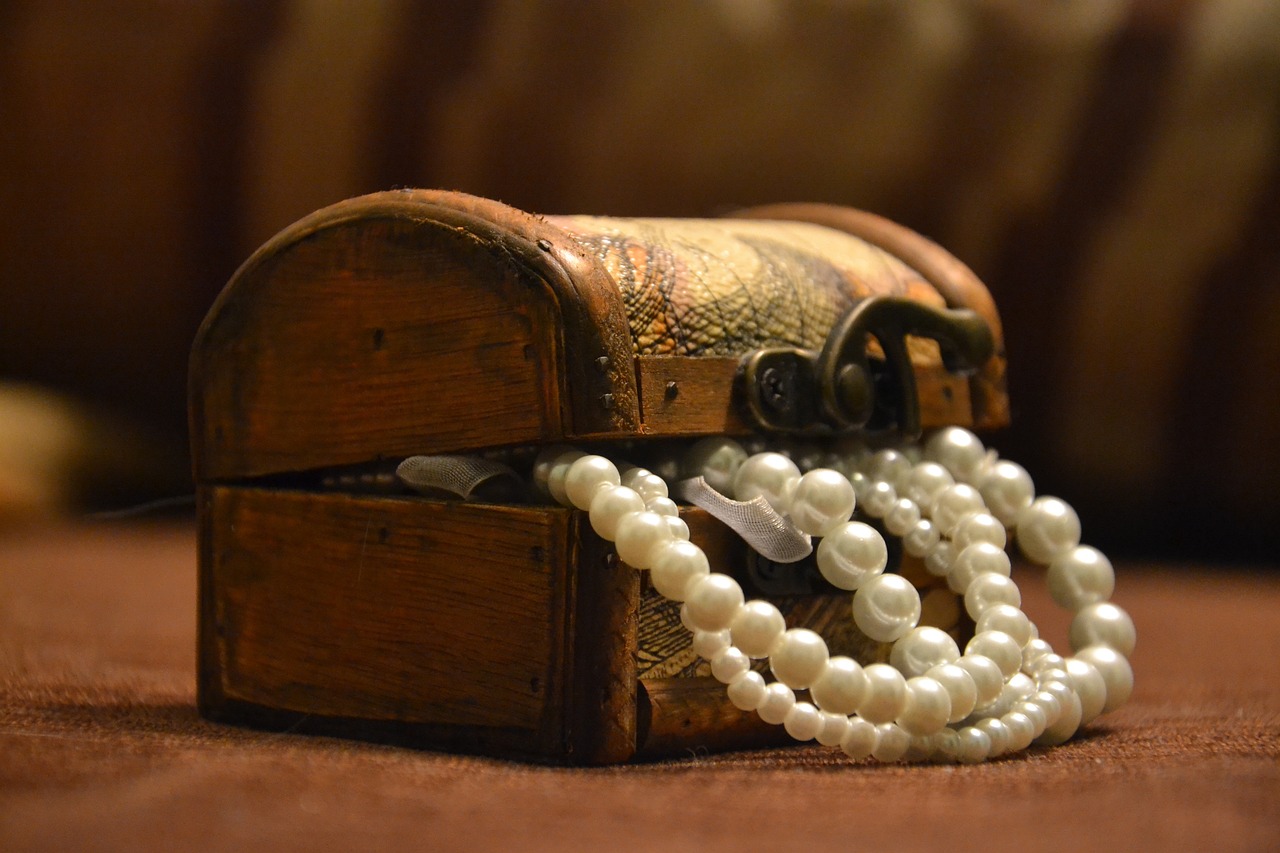
Platinum: The Ultimate Symbol of Love
Platinum has long been regarded as a precious metal that embodies the essence of love and commitment, particularly in the creation of engagement and wedding rings. Its unique characteristics and exclusivity make it a favored choice for couples looking to symbolize their enduring bond. Unlike other metals, platinum is not only rare but also incredibly durable, ensuring that the jewelry will last a lifetime.
One of the most compelling aspects of platinum is its natural luster. The metal’s silvery-white sheen enhances the brilliance of any gemstone it accompanies, making it a perfect setting for diamonds and other precious stones. This lustrous quality signifies purity and strength, further deepening its association with love.
Moreover, platinum is hypoallergenic, making it an excellent choice for those with sensitive skin. This property ensures that the wearer can enjoy their jewelry without discomfort, which is particularly important for pieces intended to be worn daily, such as wedding bands.
In terms of weight, platinum is denser than gold or silver, giving it a substantial feel that many find appealing. This weightiness can symbolize the seriousness of the commitment being made, adding another layer of meaning to the piece. Couples often choose platinum not just for its aesthetic appeal, but also for the emotional significance it carries.
When comparing platinum to other popular metals like white gold, it becomes clear that platinum stands out in terms of longevity and maintenance. While white gold requires regular replating to maintain its shine, platinum develops a unique patina over time that many wearers find attractive, showcasing the journey of love through its wear.
In conclusion, choosing platinum for engagement or wedding jewelry is a decision steeped in tradition and significance. Its rarity, durability, and timeless beauty make it the ultimate symbol of love, representing a commitment that is both profound and everlasting.
Platinum vs. White Gold
Platinum and white gold are two popular choices in fine jewelry, particularly for engagement and wedding rings. While they may appear similar at first glance, there are significant differences between the two metals that can influence your decision when selecting the perfect piece. This comparison will delve into their appearance, durability, and value, helping you make an informed choice.
- Appearance: Platinum has a natural white sheen that does not fade over time. It has a more lustrous and reflective surface compared to white gold, which is often plated with rhodium to enhance its shine. Over time, the rhodium plating on white gold may wear off, revealing a slightly yellowish hue beneath.
- Durability: One of the most significant advantages of platinum is its incredible durability. It is denser and heavier than white gold, making it more resistant to scratches and dents. Platinum jewelry can withstand daily wear better than white gold, which is alloyed with softer metals like nickel or palladium, making it less durable in the long run.
- Value: Platinum is rarer than gold, which contributes to its higher price point. When investing in jewelry, it’s essential to consider the long-term value; platinum typically retains its worth better than white gold. This makes platinum a favored choice for those looking for a lasting investment.
In conclusion, understanding the differences between platinum and white gold can significantly impact your jewelry choices. If you prioritize durability and long-term value, platinum may be the better option. However, if you’re looking for a more affordable and versatile choice, white gold can still be an excellent selection. Ultimately, the decision should reflect your personal style and the significance of the piece.
The Care and Maintenance of Platinum Jewelry
Proper care is essential for maintaining the beauty and longevity of platinum jewelry. Unlike other metals, platinum is renowned for its durability and resistance to tarnish, but it still requires regular maintenance to keep it looking its best. Here are some practical tips on how to effectively clean and store your platinum pieces.
- Regular Cleaning: To maintain the shine of your platinum jewelry, it is recommended to clean it regularly. Use a soft cloth to gently wipe the surface after wearing. For a deeper clean, soak the jewelry in a mixture of warm water and mild soap for about 20-30 minutes, then gently scrub with a soft brush.
- Avoid Harsh Chemicals: Platinum is sensitive to harsh chemicals found in household cleaners and beauty products. Always remove your jewelry before using such products to prevent damage.
- Professional Cleaning: Consider taking your platinum jewelry to a professional jeweler for cleaning and polishing at least once a year. They have the right tools and expertise to restore its original luster without causing harm.
- Proper Storage: When not in use, store your platinum jewelry in a soft pouch or a separate compartment in your jewelry box to prevent scratches. Avoid storing it with other jewelry pieces that may cause abrasion.
In addition to these tips, it is important to periodically check your platinum jewelry for any signs of wear or damage, such as loose stones or scratches. Addressing these issues promptly can prevent more significant problems in the future.
By following these simple yet effective care and maintenance guidelines, you can ensure that your platinum jewelry remains a stunning symbol of elegance and commitment for years to come.

Rose Gold: The Trendy Choice
Rose gold has emerged as a favored choice in the realm of jewelry, captivating many with its romantic hue and modern appeal. This section will explore the origins of rose gold and the reasons behind its growing popularity among contemporary jewelry enthusiasts.
Initially known as red gold, rose gold is an alloy made by combining pure gold with copper. The addition of copper not only gives the metal its distinctive pinkish tint but also enhances its durability, making it a practical option for daily wear. This unique blend has roots that trace back to the 19th century when it was first popularized in Russia, where it was often used in intricate designs and ornate pieces.
Today, rose gold resonates with jewelry lovers for several reasons. Firstly, its warm color complements a variety of skin tones, making it a versatile choice for both men and women. Whether incorporated into rings, necklaces, or bracelets, rose gold adds a touch of elegance that can elevate any outfit.
Moreover, the emotional connections associated with rose gold play a significant role in its appeal. The soft, romantic hue is often linked to feelings of love and affection, making it a popular choice for engagement and wedding rings. Couples are increasingly drawn to this metal as a symbol of their bond, further solidifying its status as a trendy choice.
Additionally, rose gold’s popularity has been bolstered by its presence in fashion and pop culture. Celebrities and influencers alike have embraced this metal, showcasing it in various styles and settings. This exposure has led to a surge in demand, encouraging jewelers to create more designs that feature this stunning alloy.
In conclusion, rose gold’s rich history, aesthetic versatility, and emotional significance make it a compelling choice for modern jewelry lovers. As trends evolve, rose gold continues to maintain its status as a beloved and fashionable option, appealing to those seeking a blend of tradition and contemporary style.
The Allure of Rose Gold in Fashion
Rose gold has emerged as a prominent trend in the world of fashion jewelry, captivating the hearts of many with its distinctive hue. This unique blend of gold and copper creates a warm, pinkish tone that not only stands out but also complements a variety of styles and skin tones. In this section, we will explore the reasons behind the growing popularity of rose gold and how it enhances personal style.
One of the most appealing aspects of rose gold is its versatility. It pairs beautifully with both casual and formal outfits, making it a go-to choice for many fashion enthusiasts. Whether you’re dressing up for a wedding or keeping it casual for a brunch date, rose gold accessories can elevate your look effortlessly. The soft, romantic color adds a touch of elegance without being overly flashy, making it suitable for any occasion.
Moreover, rose gold is particularly flattering on a wide range of skin tones. Its warm undertones can enhance the natural glow of fair, medium, and deep complexions, allowing it to shine on everyone. This inclusivity has made rose gold a favorite among jewelers and consumers alike, as it transcends traditional color barriers often seen in jewelry.
In addition to its aesthetic appeal, rose gold carries a sense of emotional warmth. It is often associated with feelings of love and affection, making it a popular choice for sentimental gifts. Many couples choose rose gold for engagement and wedding rings, symbolizing their unique bond and commitment.
As fashion trends continue to evolve, rose gold remains a timeless choice that resonates with both modern and classic styles. Its ability to blend seamlessly with other metals, such as silver and yellow gold, further enhances its desirability. In conclusion, the allure of rose gold in fashion jewelry lies not only in its stunning appearance but also in its capacity to complement various styles and skin tones, making it a cherished choice for many.
Symbolism of Rose Gold
Rose gold, with its exquisite blend of pink hues and warm undertones, is more than just a trendy choice in jewelry; it embodies deep emotional significance. This unique metal has become synonymous with love, affection, and a sense of warmth. As we delve into the meanings behind rose gold, we uncover the rich emotional connections that this beautiful metal fosters.
- Romantic Associations: The soft, rosy tint of rose gold evokes feelings of romance and tenderness. It is often chosen for engagement and wedding rings, symbolizing the enduring bond between partners.
- Warmth and Comfort: The warm color of rose gold is reminiscent of sunset and embraces, creating a sense of comfort and safety. This emotional warmth resonates with individuals looking to express their affection for loved ones.
- Celebration of Individuality: Rose gold is a versatile metal that complements various styles, making it a favorite among those who wish to express their unique identity. It allows wearers to showcase their personality while maintaining a sense of elegance.
Moreover, the popularity of rose gold in contemporary jewelry reflects a broader cultural shift towards valuing emotional connections over mere aesthetics. This metal resonates with those who appreciate the deeper meanings behind their jewelry choices.
In conclusion, rose gold transcends its visual appeal, embodying love, warmth, and a celebration of individuality. Whether worn as a symbol of commitment or as a personal statement, rose gold continues to capture hearts and inspire connections.
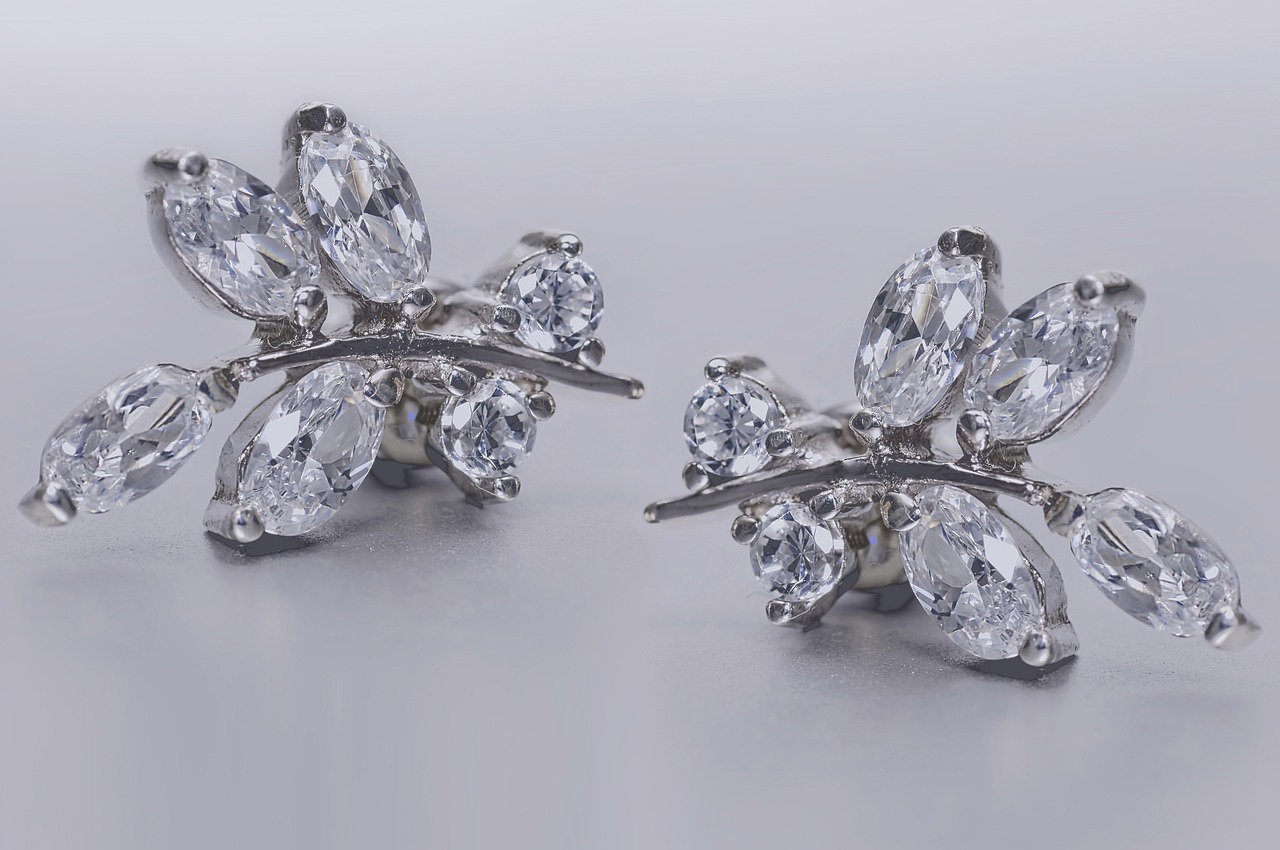
Brass and Copper: The Artisan’s Choice
Brass and copper are two metals that have captured the hearts of artisans and jewelry makers alike. Their unique colors, ranging from the warm tones of copper to the golden hues of brass, make them not only visually appealing but also versatile in design. This section delves into their significance in the realm of handmade jewelry and craftsmanship.
One of the primary reasons artisans favor brass and copper is their malleability. Both metals can be easily shaped and molded, allowing for intricate designs that might be challenging to achieve with more rigid materials. This property enables artisans to express their creativity and craftsmanship through unique pieces that reflect their personal style.
In addition to their physical properties, brass and copper carry a wealth of cultural significance. Historically, these metals have been used in various cultures for decorative purposes, ceremonial items, and even currency. Their rich history adds depth to any piece of jewelry, making it not just an accessory but a story waiting to be told.
| Metal | Properties | Uses in Jewelry |
|---|---|---|
| Brass | Malleable, durable, and resistant to tarnish | Rings, bracelets, and pendants |
| Copper | Soft, ductile, and develops a patina over time | Earrings, necklaces, and decorative pieces |
Moreover, the environmental impact of using brass and copper is a growing concern. Artisans are increasingly aware of the need for sustainable practices in sourcing these metals. By choosing recycled materials or responsibly mined options, they can create beautiful jewelry while minimizing their ecological footprint.
In conclusion, brass and copper are not merely materials; they represent a connection to tradition, artistry, and sustainability. As artisans continue to explore their potential, these metals will undoubtedly remain a beloved choice in the world of handmade jewelry.
The Environmental Impact of Brass and Copper
Brass and copper are not only admired for their unique aesthetics and workability in jewelry making, but their production also raises significant environmental concerns. As artisans increasingly seek to create beautiful pieces, it is essential to consider the sustainability of the materials used.
The extraction and processing of brass and copper can lead to serious environmental degradation. Mining activities often result in habitat destruction, soil erosion, and contamination of local water sources. Additionally, the energy-intensive processes involved in refining these metals contribute to greenhouse gas emissions, exacerbating climate change.
To mitigate these impacts, many jewelry makers are turning to sustainable sourcing practices. This includes using recycled metals, which significantly reduces the demand for newly mined materials. By utilizing recycled brass and copper, artisans can create stunning pieces while minimizing their carbon footprint.
- Recycled Materials: Opting for recycled brass and copper helps conserve natural resources and reduces waste.
- Ethical Sourcing: Supporting suppliers who adhere to responsible mining practices ensures that the materials used are obtained with minimal environmental impact.
- Local Sourcing: By sourcing materials locally, artisans can reduce transportation emissions and support local economies.
Furthermore, many artisans are adopting eco-friendly practices in their production processes. This includes using non-toxic finishes and sustainable packaging, which collectively contribute to a more sustainable jewelry industry.
In conclusion, while brass and copper are beautiful choices for jewelry, it is crucial to be aware of their environmental implications. By embracing sustainable practices, both artisans and consumers can enjoy the beauty of these metals while protecting our planet.
Brass and Copper in Cultural Jewelry
Brass and copper have played significant roles in various cultures throughout history, particularly in the realm of jewelry making. These metals are not only valued for their aesthetic appeal but also for the deep meanings and traditions they embody.
In many ancient civilizations, brass, an alloy of copper and zinc, was often used in ceremonial artifacts and jewelry. Its golden hue made it a symbol of wealth and status. For instance, in ancient Egypt, brass was favored for crafting intricate jewelry pieces that adorned the elite, reflecting both their power and divinity. Similarly, in African cultures, brass jewelry is often associated with spirituality and is used in rituals to connect with ancestors and deities.
Copper, on the other hand, has been used for thousands of years due to its natural abundance and malleability. In Native American cultures, copper jewelry is not only a fashion statement but also a representation of healing and protection. Many tribes believe that wearing copper can help balance energies and promote physical well-being. Additionally, copper is often used in traditional medicine, highlighting its importance beyond mere ornamentation.
The significance of these metals extends to their use in handcrafted jewelry. Artisans often choose brass and copper for their ability to be shaped into unique designs, allowing for personal expression and cultural storytelling. In contemporary settings, these materials are celebrated for their eco-friendliness, as they can be sourced sustainably and often recycled.
In conclusion, the use of brass and copper in cultural jewelry is rich with history and meaning. These metals not only enhance the beauty of the pieces but also carry stories and significance that resonate with various traditions around the world. Understanding their cultural context can deepen one’s appreciation for the artistry involved in jewelry making.
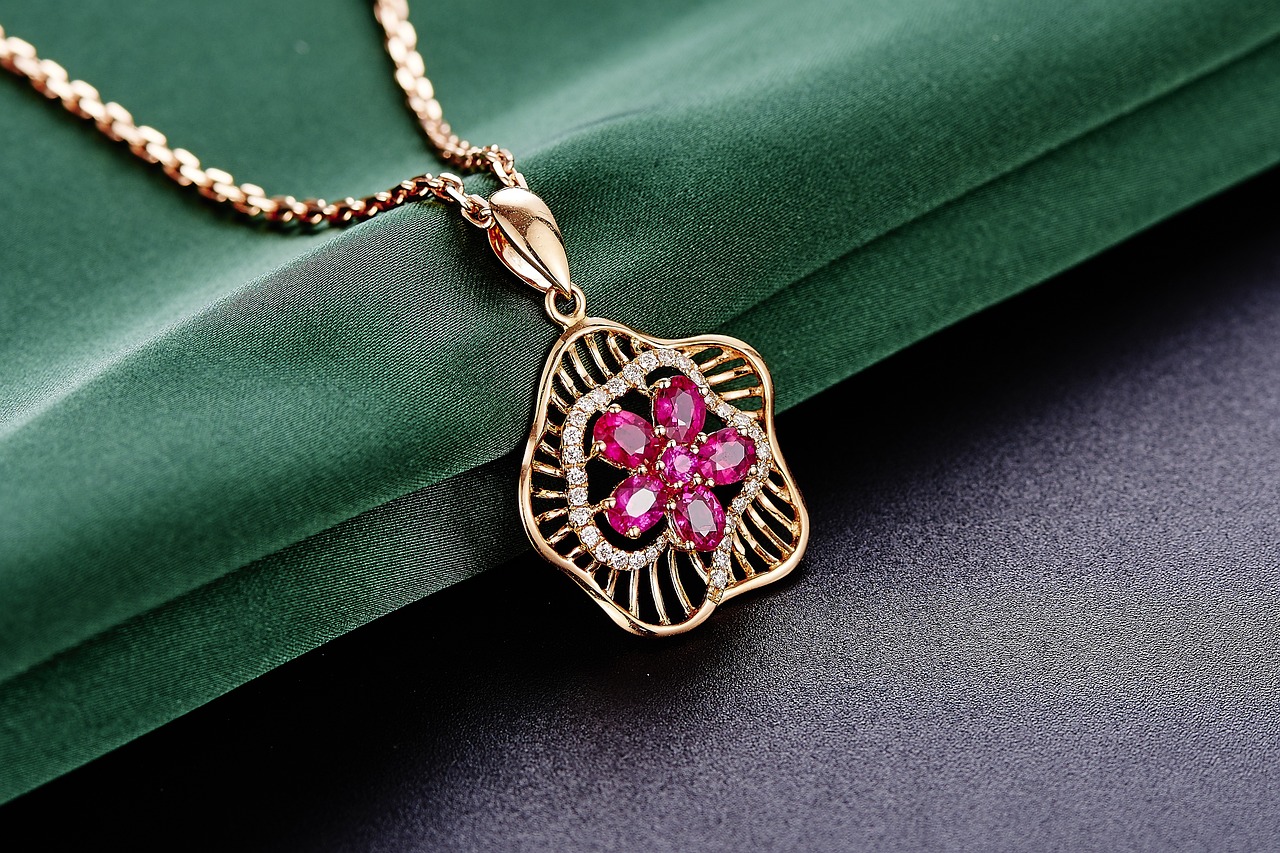
Conclusion: Choosing the Right Metal for You
Choosing the right metal for your jewelry is a journey that transcends mere aesthetics. It is a decision deeply rooted in the understanding of the meanings and properties that each metal embodies. From ancient civilizations to modern trends, metals have been imbued with significance that can enhance personal expression and connection.
Gold, for instance, is not just a symbol of wealth; it represents purity and success. Wearing gold jewelry can evoke feelings of confidence and achievement, making it a popular choice for significant life events. Similarly, silver is often linked to the moon, embodying intuition and emotional depth. Its reflective quality can serve as a reminder of inner strength and resilience.
When it comes to platinum, this metal is revered for its rarity and strength, often chosen for engagement rings as a testament to enduring love and commitment. The choice of platinum can signify a deep emotional connection, making it a meaningful addition to any jewelry collection.
On the other hand, rose gold has emerged as a trendy option, symbolizing warmth and romance. Its unique hue resonates with many, offering a modern twist on traditional jewelry choices. Brass and copper, favored by artisans, represent creativity and craftsmanship, often reflecting the wearer’s individuality and appreciation for handmade artistry.
Ultimately, the selection of jewelry metal should resonate with your personal values and experiences. Consider what each metal signifies to you personally, and let that guide your choices. This thoughtful approach ensures that your jewelry not only complements your style but also tells a story that is uniquely yours.
In conclusion, the decision of which metal to choose for your jewelry is a deeply personal one. By understanding the meanings and properties of different metals, you empower yourself to make choices that reflect your identity and values.
Frequently Asked Questions
- What is the significance of gold in jewelry?
Gold is often seen as a symbol of wealth and purity. Its rich history and unique properties make it a timeless choice for jewelry, appealing to those who value both aesthetics and emotional connections.
- Why is silver considered the metal of the moon?
Silver is associated with the moon due to its luminous appearance and connection to femininity. It represents intuition and emotions, making it a popular choice for jewelry that reflects personal feelings and subconscious desires.
- What are the healing properties of silver?
Many believe that silver can promote balance and harmony, influencing both physical and emotional well-being. It’s often thought to have a calming effect, making it a cherished metal in various cultures.
- How does platinum compare to white gold?
Platinum is rarer and more durable than white gold, making it a popular choice for engagement and wedding rings. Understanding these differences can help you make an informed decision when selecting jewelry.
- What makes rose gold a trendy choice?
Rose gold has gained popularity due to its romantic hue and modern appeal. Its unique color complements various styles and skin tones, making it a favorite among contemporary jewelry lovers.
- Are brass and copper environmentally friendly options?
While brass and copper are beautiful metals, their production can have environmental implications. It’s essential to consider sustainable practices when sourcing these materials for jewelry.

